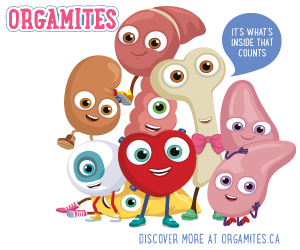Helping our students find their post-secondary destinations
As an educator, you become adept at saying goodbye. The minute a student walks through your door—whether it’s the classroom or the guidance office—you know that the relationship is temporal. You are working with those who happen to be in your charge for a set period of time in the hopes that, at the end of a well-documented and regimented process, they will move on to bigger and better things. You are a witness to their growth for part or all of their high school careers. You get them ready and then they launch into the next chapter of their lives.
But the launch process is not automatic. Instead, it is a collective effort involving the work of the student, input from parents, instruction from teachers, and direction from guidance counsellors.
Start with the student
Ask a guidance counsellor what a student needs to be successful, and you’ll hear words like: resilience, initiative, independence, perseverance, creativity, tenacity, and the ability to meet goals. They’ll also say a student needs to be realistic. They need to have enough self-knowledge to recognize their strengths and weaknesses—and have enough self-confidence to deal with setbacks as they pursue their dreams. They need to be reminded and affirmed in the reality that nobody is perfect. Many guidance counsellors see this sense of realism, and the maturity that accompanies it, as the most important aspect in the evolution of a student as they move through high school to college or university. If a counsellor can foster these characteristics, and the students can recognize their value early on, the path to post-secondary will be a much easier one to traverse.
Start early
A steady stream of encouragement and realism should start from day-one in a student’s high school journey. Planning for their departure to a post-secondary destination is also something that needs to start early.
This might be a big ask. Sometimes it is hard to get a student to recognize what there academic and career ambitions are but if, say by the middle of grade ten, a counsellor can get a general idea of the direction a student wants to go—arts, science, business, trades—then at least they have something to work with. This will allow for some advanced planning that will put students in the courses that target their anticipated post-secondary path. For example, if a student proves adept at math, and enjoyed a business elective that they have taken, the appropriate senior level courses can be put in place for a business pathway. This early planning can do one of two things: position the student for a smooth transition to a college or university or let the student know that this is not the path for them. Either outcome provides the student with valuable information going forward.
Assess the situation
Once decisions are starting to be made (whether this is in the junior or senior years of high school) an assessment process can be initiated by the guidance counsellor. Some critical questions will be asked of the student at this point:
- What are your interests and goals?
- What does your past performance and/or grades tell you about your academic strengths and weaknesses?
- Are you interested in pursuing a college or university pathway?
- Will you be attending a post-secondary institution in your hometown or do your parents have the means for you to go away to school?
- Are your goals realistic and attainable?
A counsellor will explore these questions with their student. They can also contact the student’s parents for feedback regarding these discussions. Once these questions have been addressed, an assessment can be made to either make amendments or move forward.
Determine a pathway
With an understanding of the student’s interests, goals, strengths and weaknesses in mind, a post-secondary pathway can be selected. Many counsellors will emphasize a wholistic approach that demonstrates multiple options to meet the objective. In other words, if a student is pursuing a career in medicine, it would be important to look at the broad range of the field of medicine (i.e. nursing, health science, diagnostics, occupational therapy, physiotherapy, etc.) and then review several programs at both the college and university level designed to achieve the student’s goals.
This is where some tough conversations may need to happen. For example, if a student is expressing an interest in a program in engineering, but they are struggling in math and science—so much so that the prospects of getting into a program are poor—alternatives need to be explored. Perhaps a college program focusing on the rudiments of engineering should be taken first followed by a university program (if that serves the student’s career ambitions). The big questions for the student to consider are:
- Why are you selecting a particular field of study?
- Does the program reflect your interests or is it what your peers/parents/social media are influencing you to pursue?
- Does the field of study cater to your strengths as a student?
- Can you get a clear vision of yourself in a profession related to this field of study?
Too often students feel the need to pursue degrees and diplomas that they feel would please others, but do not fit in with who they are as students and as people. Guidance counsellors should be willing to ask for clarity (not perfect clarity, but at least as sensible explanation) from students when it comes to their post-secondary prospects. They also need to strongly emphasize the need for a plan B (… and C and D …) if they do not get into their first choice of program.
Confirm the choice
Once the guidance counsellor and the student have assessed the situation and determined an appropriate pathway, the next step is to confirm the choice and start picking programs. This will require quite a bit of back and forth (perhaps revisiting the questions above a few times). The student will need to research programs and the guidance counsellor will need to make suggestions to steer them in the right direction. If the student is coming in with their hands in the air in a gesture of surrender, a little prodding should ensue from the counsellor. However, the guidance counsellor should not take over the process. The choice needs to be the students with the counsellor remembering the ‘guidance’ part of their job description. Often this means suggesting multiple pathways to achieve an academic and career goal. Sometimes students and parents find this frustrating, as if the counsellor is not doing their job by not taking over, but if a student is going to feel they own their decisions, they need to make their own decisions.
Go deeper
Ideally, a decision on a post-secondary area of study will be made by the end of grade 11 or, at least, by early grade 12. Now the student can narrow their search to particular programs and schools. They should attend college and university fairs offered by their school, board, and by the post-secondary institutions themselves. They should also attend presentations organized by the Guidance Department. In other words, with the encouragement of guidance counsellors and parents, the student should engage in a period of discovery learning to confirm the field of study they want to pursue.
When the search is narrowed to a specific program at several schools, the student should be encouraged to visit the campus of their preferred institutions. A campus visit can act as a deeper confirmation of the choice being made. Some campuses will feel like a good fit while others will not. The only way for the student to find out is to arrange a visit.
Emphasize Plan B
At this point, the student is deep into the multi-year process described at the beginning of this article. They have started early, done their research, sought advice from a counsellor, consulted their parents, selected a program and several schools they’d like to attend. Their applications are submitted, and the waiting game begins. Some students will get into their first choice of schools, others will not. This is why it is essential for guidance counsellors to have strongly promoted a Plan B from the outset because when the disappointment of not getting their first-choice hits that adolescent, the weight of that rejection can feel crushing. While this sounds dramatic, we all know this is how many of our students feel. Most counsellors recommend a stoic response to a rejection, emphasizing the merits of the program the student has selected and de-emphasizing the importance of a certain school. At the end of the day, the student will earn a degree or diploma in the area of study they have selected, and that is the goal in education. They should be reminded that earning that ticket (the degree or diploma) is a huge accomplishment regardless of the school they attend.
They’re ready to launch
Then suddenly it is June of the graduating year. All that hard work over the years is complete: universities and colleges have made their offers, and the student has accepted admittance to their program. The resilience, initiative, independence, perseverance, creativity, and tenacity the counsellor has encouraged has been exhibited to varying degrees by the student and the result is a placement in a program that the student is happy with. They’ve done the work, and you have guided them, so the objective has been realized, and they’re ready to launch.
By: Sean Dolan
Thanks to the guidance counsellors of the Dufferin-Peel CDSB for their input and insights for this article.






